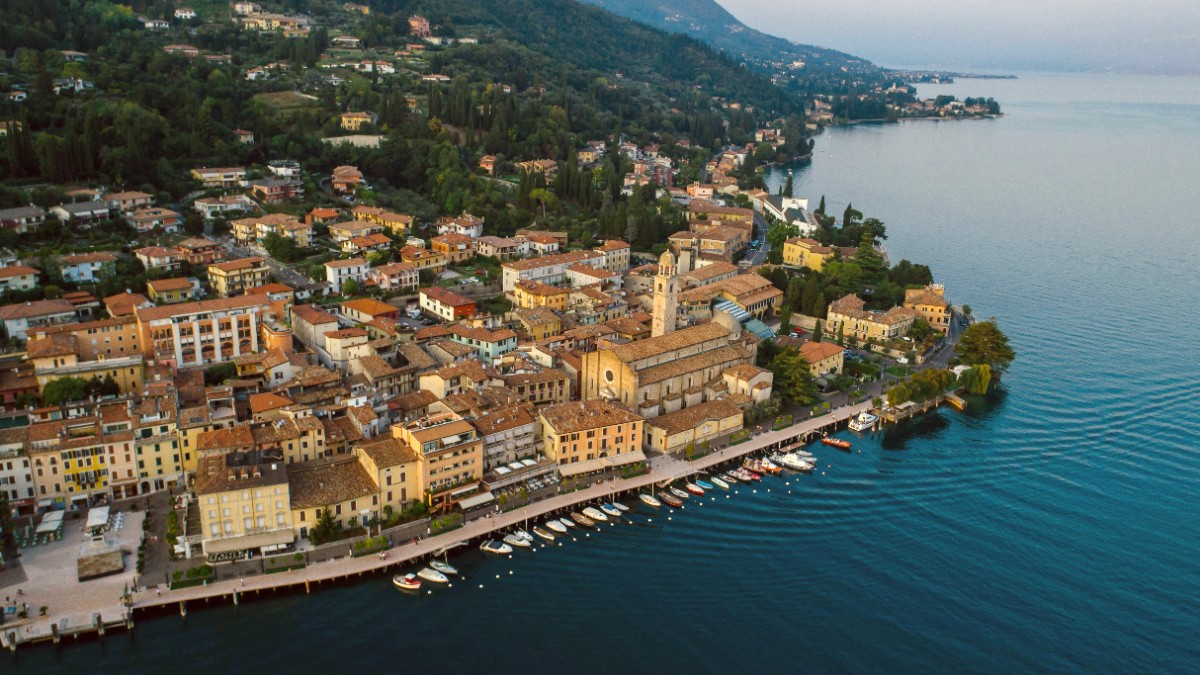
Lombardy And The Lakes, Italy
Brescia presents more than just sights; it fosters immersion. Sense the city's pulse in its bustling markets, taste its hearty regional cuisine in family-run trattorias, and encounter the warmth of its people. Beyond the city, Lake Garda, Lake Iseo, and the Franciacorta wine region await, with opportunities for outdoor pursuits, relaxation, and world-class wine tasting. This guide supports making the most of a journey, offering knowledge for confident travel and connection with this remarkable part of Italy. Prepare to discover Brescia, a destination ready to impress with its depth and charm.
Brescia sits strategically in Northern Italy's Lombardy region. It rests at the southern base of the Alps, specifically the Brescian Prealps, a mountain range forming a natural northern border. This location places Brescia with two of Italy’s beautiful lakes nearby: Lake Iseo to the west and Lake Garda to the east. The city also lies within the expansive Po Valley, a fertile plain across much of northern Italy. The Mella and Garza rivers flow through the city, contributing to its landscape and historical development.
Brescia's position consistently brought strength and influence. It is located approximately 100 kilometers (62 miles) east of Milan and about 70 kilometers (43 miles) west of Verona. This central location in the Lombardy plain made Brescia a natural crossroads. Historically, it served as a link along trade routes connecting Italy with Central Europe. This geographical advantage meant goods, ideas, and people passed through Brescia, bringing richness to its culture and economic standing. The surrounding landscape varies from the flat, agricultural plains of the Po Valley to the rolling hills of the Franciacorta wine region, and the rising peaks of the Prealps. These geographical features bring diverse experiences, from city exploration to mountain hikes and lakeside relaxation, all within a short distance of Brescia. The city itself has a gentle slope, rising towards the Cidneo Hill, where its historic castle stands, offering panoramic views of the entire region. This blend of urban, agricultural, lake, and mountain environments makes Brescia an unique base for exploration.
The city’s story begins in antiquity. During the Roman Period, Brescia was known as "Brixia." It developed into an important Roman colony and later a thriving city within the Roman Empire. Evidence of this powerful era remains visible today. The Roman Forum, the Capitolium (a grand temple dedicated to Jupiter, Juno, and Minerva), and the Roman Theatre showcase Roman engineering and urban planning. The Roman architectural complex of Brixia is a recognized UNESCO World Heritage Site.
Following the fall of the Roman Empire, Brescia entered the Lombard Period. The Monastic Complex of San Salvatore-Santa Giulia is a prominent reminder of this era. This complex, also an UNESCO World Heritage site, showcases impressive examples of Lombard architecture and art. It functioned as a major religious and political center during the early Middle Ages.
Important colony and city within the Roman Empire.
Major religious and political center in the early Middle Ages.
Flourished with civic identity, later under Venice.
Fierce independence shown during 1849 uprising.
Economic contributor in mechanical and metallurgical sectors.
Brescia’s history continued through the Medieval and Renaissance periods. It flourished as a free commune, developing its own civic identity and political structures. Later, it came under the rule of powerful regional families, like the Visconti of Milan, before falling under the dominion of the Republic of Venice. Venetian rule, which lasted from 1426 to 1797, left a strong imprint on Brescia. Venetian architectural styles appear in many buildings, notably in Piazza della Loggia, which showcases exquisite Renaissance design. This period brought prosperity and artistic growth to the city.
The city earned its famous nickname, "Lioness of Italy" (Leonessa d'Italia), for its courageous ten-day uprising against Austrian rule in 1849. This act of defiance demonstrated the Brescian people's independent spirit and their commitment to an united Italy. This historical event remains a source of immense pride for the city's residents.
In the Modern Era, Brescia transformed into a major industrial and economic focal point in Italy. It gained recognition for its mechanical and metallurgical industries, contributing significantly to the national economy. Today, Brescia combines its rich historical layers with a forward-looking industrial base, presenting an unique blend of ancient charm and modern energy. Its historical depth means that everywhere one looks, a story waits to be uncovered.
Brescia's historical depth means that everywhere you look, from its grand squares to its quiet alleyways, a story waits to be uncovered.
Brescia presents a compelling blend of ancient history, modern industry, and natural beauty. Here is a brief overview:
This city offers a comprehensive Italian experience, showing historical depth, regional flavors, and a welcoming local atmosphere.
Official Name: Comune di Brescia, Region: Lombardy, Province: Brescia (capital city)
Population (2023 estimate): ~197,000 city, ~1.2M province. Area: 90.34 sq km. Elevation: 149 m.
Time Zone: CET (CEST in summer). Language: Italian. Currency: Euro. Main Activities: Manufacturing, Services, Tourism, Agriculture.
Brescia holds two significant UNESCO designations, underscoring its historical and cultural value: